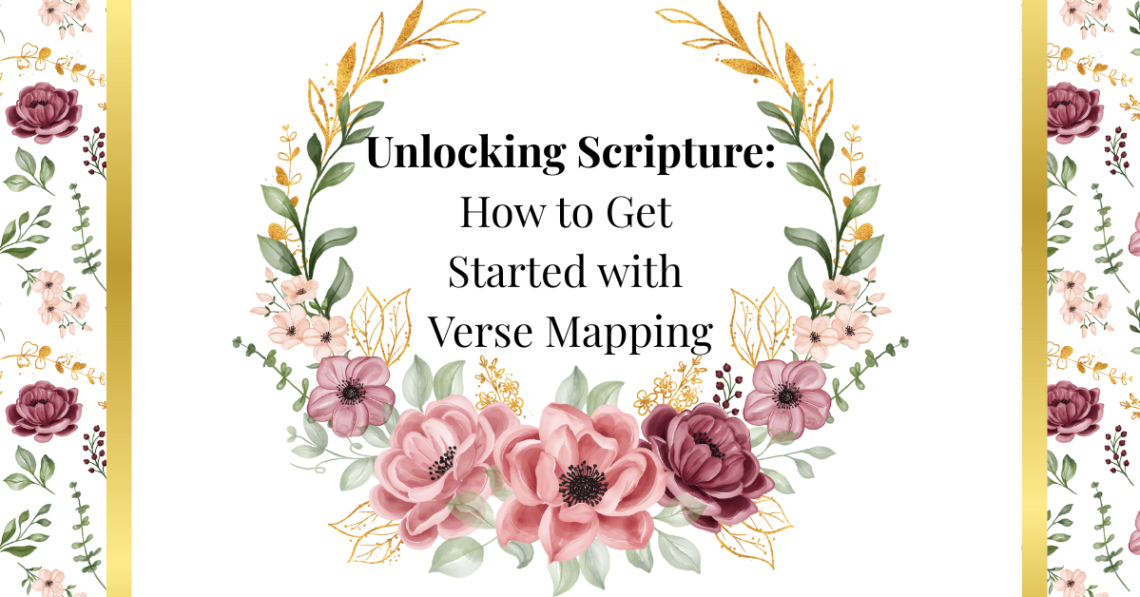Have you ever read a Bible verse and thought, “I know this is important, but I wish I understood it better”? You’re not alone. One of the most powerful tools to help you dig deeper into God’s Word is verse mapping. It’s a method that turns your Bible reading into a rich, engaging, and eye-opening experience with the Lord. Whether you’re new to Bible study or looking to deepen your understanding, verse mapping can transform the way you read scripture.
What Is Verse Mapping?
Verse mapping is a Bible study method that helps you break down a single verse to understand its meaning, context, and application. Think of it as zooming in on a specific verse to see every detail, layer, and nuance that God wants to reveal.
It’s more than just highlighting words—it’s engaging your heart, mind, and even creativity to uncover what God is speaking to you personally.
Why Try Verse Mapping?
- It slows you down – In a good way! Verse mapping encourages you to meditate on a verse rather than rushing through a chapter.
- It brings clarity – Words, translations, and context become clearer as you dig into definitions and background.
- It makes it personal – As you study, you’ll begin to see how each verse applies to your own walk with Christ.
- It strengthens your memory – Because you’re actively engaging with the verse, it’s more likely to stick with you.
How to Start Verse Mapping
Here’s a simple step-by-step guide to get you started:
1. Choose a Verse
Pick a single verse that stands out to you or one that relates to something you’re going through. You can choose a verse from your daily Bible reading, sermon notes, or even a devotional.
2. Write the Verse
Write out the verse in your notebook or verse mapping worksheet. Leave plenty of space for notes around it. Be sure to include the translation (ESV, CSB, NIV, etc.), and feel free to compare multiple versions.
3. Define Key Words
Circle or highlight keywords in the verse. Look up their meanings in the original Hebrew or Greek (tools like Blue Letter Bible or BibleHub are great for this). Write down definitions, synonyms, and deeper meanings.
4. Explore the Context
Ask yourself:
- Who is speaking?
- Who is being spoken to?
- What is happening before and after this verse?
Reading the surrounding verses or the entire chapter can shed light on the purpose and message of the verse.
5. Cross-References
Look for other Bible verses that relate to the one you’re studying. Let Scripture interpret Scripture. You’ll often find that God repeats themes throughout His Word.
6. Apply It
This is the most important part. What is God saying to you through this verse? How does it challenge, encourage, convict, or guide you? Write down your reflections and any action steps you feel led to take.
7. Pray the Verse
Turn your study into a conversation with God. Ask Him to help you live out what you’ve learned and to continue speaking through His Word.
A Simple Example
Let’s say you choose Philippians 4:6:
“Do not be anxious about anything, but in everything by prayer and supplication with thanksgiving let your requests be made known to God.” (ESV)
You might:
- Highlight “anxious,” “prayer,” “supplication,” and “thanksgiving.”
- Look up their meanings in Greek.
- Compare how other translations phrase the verse.
- Read the whole chapter to understand Paul’s encouragement to the Philippians.
- Cross-reference with Matthew 6:25-34 (Jesus on worry).
- Reflect on what situations in your life cause anxiety and how this verse reminds you to bring those to God.
- Pray it back to God: “Lord, help me not to be anxious. Teach me to come to You with everything, with a thankful heart.”
Make It Your Own
Verse mapping isn’t one-size-fits-all. Use color coding, drawings, or printed templates. You can be as creative or minimalist as you want. The goal is connection with God, not perfection.
If you’d like a free printable verse mapping worksheet to help you get started, I’ve created one for you! It includes space for the verse, definitions, notes, and personal application.
Final Thoughts
Verse mapping is a simple but powerful way to draw closer to God through His Word. It’s not about checking a box—it’s about sitting with Scripture long enough to let it sink in, shape you, and speak to you. So slow down, grab your Bible, and start mapping one verse at a time. You’ll be amazed at how much God reveals.
Have you tried verse mapping before? Let me know in the comments below or tag me on social media with your verse mapping pages. Let’s encourage each other to dive deeper into God’s Word!





